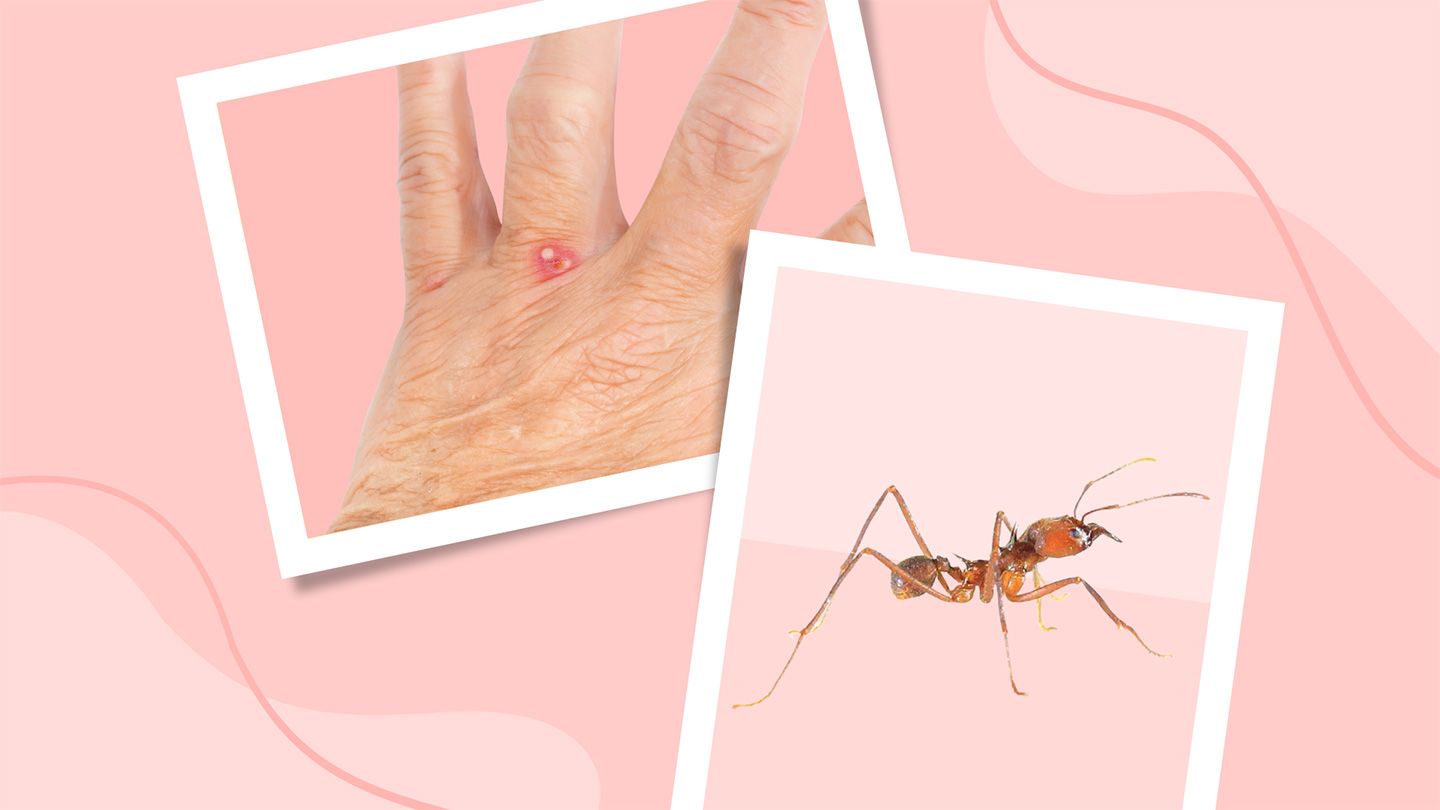Fire ants are among the few types of ants in the United States that frequently sting people. There are two types: a red fire ant, Solenopsis invicta, and a black fire ant, Solenopsis richteri.
Both types are imported, coming from South America originally. But today, red fire ants are found primarily in the South and sometimes in California and Puerto Rico. Black fire ants, on the other hand, are not as widespread and are limited to northern Arkansas, Mississippi, and southern Tennessee.
It’s a common misconception that fire ants bite. “Fire ants don’t bite. They deliver a sting via their tail,” says Michael Merchant, PhD, professor emeritus of entomology at Texas A&M University in Dallas. “Only the females sting, and their stinger is very sharp and delivers venom.” Dr. Merchant says fire ants are well named because their sting causes a hot, fiery sensation on the skin.
When fire ants are disturbed, they act quickly and aggressively, often swarming the intruder. They can even run up vertical surfaces.
It’s possible to be stung by a lone fire ant. “You may be outside working in a garden and get just one on your arm or leg,” says Merchant. “But commonly people make the mistake of stopping and standing on a mound without realizing it, so they end up covered and they get hundreds of stings.”
Other Symptoms
“Bites start out as small, red spots, and, after a day or two, a white pustule forms that’s itchy and a little bit painful,” Merchant says. These symptoms typically resolve within three to eight days.
A fire ant’s stinger is not barbed, so it can sting multiple times. “You may see a row of red marks, and that’s where one ant has grabbed on and stabbed its stinger down in a semicircle,” he says.
Some people may develop a large welt that swells and itches.
What to Do About Them
Merchant says that, in most cases, fire ant stings don’t require any medical treatment. You can wash the stings with soap and water and apply ice to the affected area to keep the swelling down. You can use over-the-counter antihistamines or topical steroid creams, such as hydrocortisone, as needed to reduce the itching.
If the sting continues to swell or grow larger after a day or two, you may have a secondary infection. Call your doctor right away, especially if you also have a fever, muscle aches, or flu-like symptoms.
When to Seek Medical Attention
Head to your nearest emergency room if you notice any of the following symptoms, which can indicate an anaphylactic response:
- Difficulty breathing
- A rapid heart rate
- A swollen throat, arms, or legs
- Dizziness or a sharp drop in blood pressure
Read the full article here




